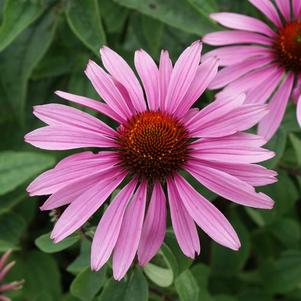Echinacea purpurea 'Ruby Star'
Rubinstern
Sold Out
Improved purple coneflower with larger flowers and more intense carmine-red color, horizontal petals, sturdy stems, blooms all summer.
- · Intense carmine-red flowers
- · Blooms all summer
- · Hardy to zone 3
Recommended Substitution

Echinacea purpurea 'Magnus'
Coneflower
Tall plants with large bright rosy-pink flowers, petals remain more horizontal (not drooping), large coppery-brown cones,
| Item # | Pack | Size | Avail Units | Avail Plants | |
|---|---|---|---|---|---|
|
4519155
|
30 | 3" Plug | SOLD OUT | SOLD OUT | Login for Pricing |
Height:
36 in
Spread:
18-24 in
Zone:
3-8

Echinacea purpurea 'Ruby Star'
Exposure
| • | Sun Tolerant |
| • | Morning Sun / Afternoon Shade |
Soil Moisture Needs
| • | Dry |
| • | Average Soil |
Nature Attraction
| • | Attracts Butterflies |
Critter Resistance
| • | Deer Resistant |
Attributes
| • | Good Cut Flower / Foliage |
| • | Dried Flower |
| • | Fragrant |
| • | Good Container Plant |
Season of Interest (Flowering)
| • | Summer |
| • | Late Summer |

